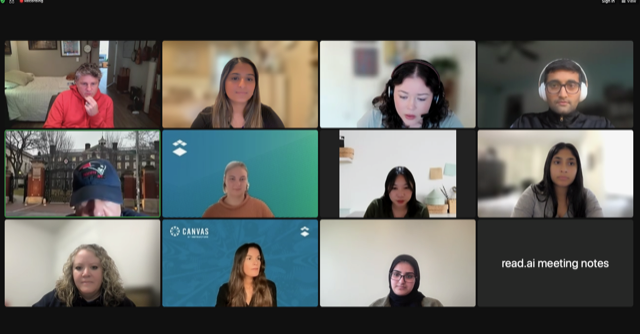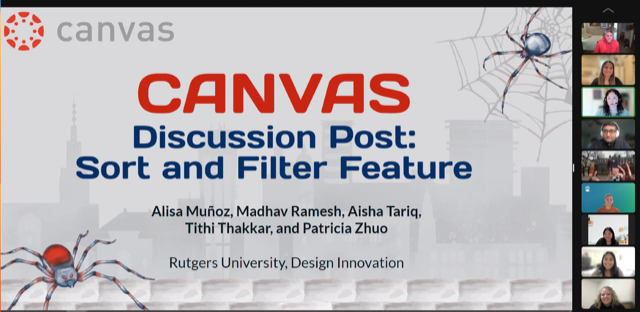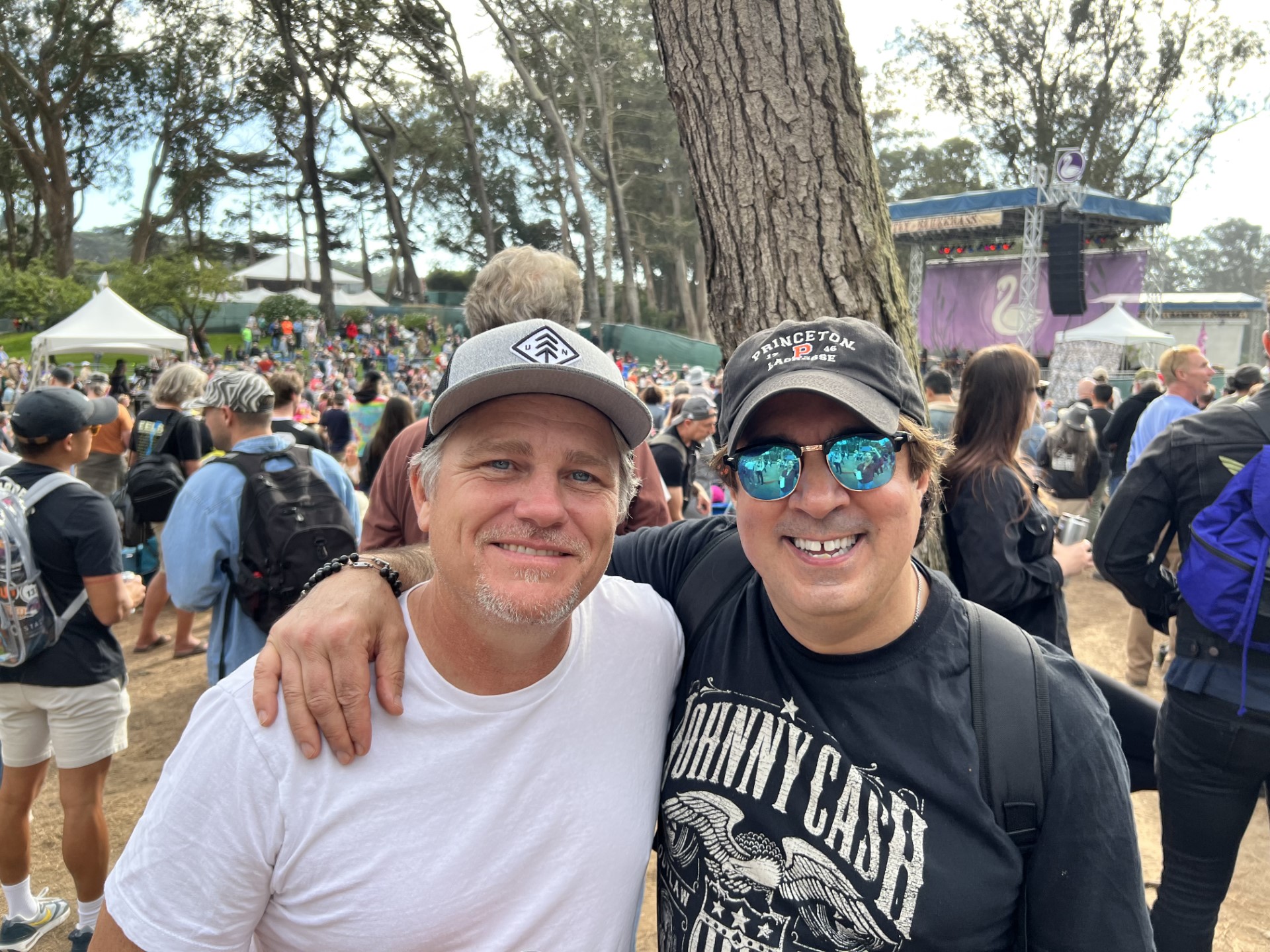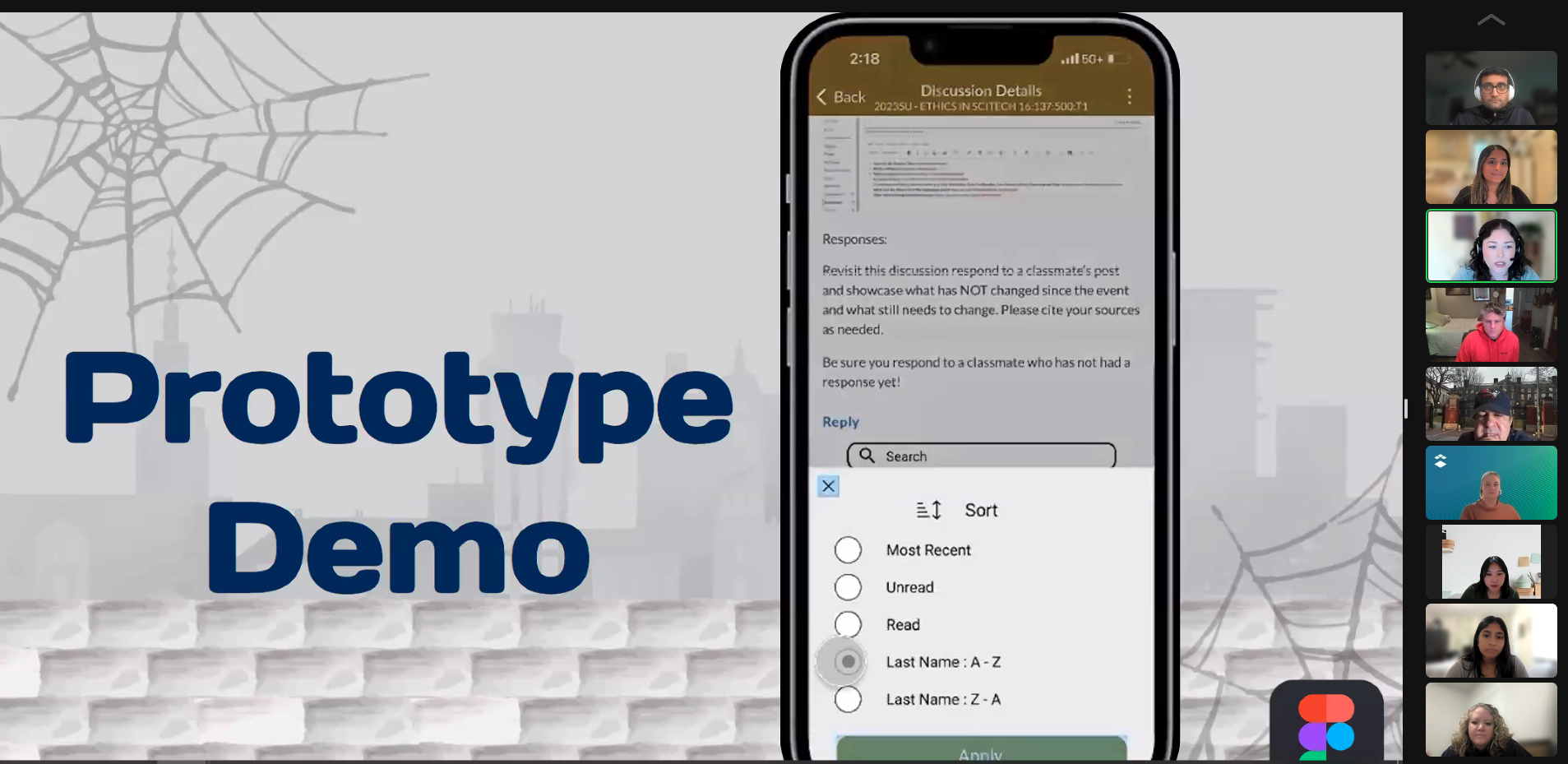If you’ve recently been a student at Rutgers University, you’ve most likely used Canvas, the world’s #1 learning management software. For the course Design Innovation: Make and Market Anything, a group of MBS students enhanced the user experience for discussion threads. This group of students included Alisa Muñoz, Madhav Ramesh, Aisha Tariq, Tithi Thakkar, and Patricia Zhuo. The instructor and creator of the course, Mike Grandinetti, realized the innovation to be so valuable that he brought their product out of the classroom and in front of a team of senior product managers and designers at Instructure 's Canvas business unit.


About the Course
According to Grandinetti, about 95% of all new products fail. In the course Design Innovation: Make and Market Anything, students learn the theory and practice of applying design thinking, lean methodologies, and innovation mindset in both the scientific and technology fields. Students examine the core principles, frameworks, and methodologies used in new product development.
“This course is intended to provide students who are going into industry with real-world proven processes, frameworks, and mindsets to enable them to have a much higher likelihood of success of conceiving of, designing and building a product that the world needs and customers really want,” said Grandinetti.
Grandinetti is an innovation expert well-positioned to lead students. He is an entrepreneurial co-founder across eight successful tech startups, two with NASDAQ IPOs, a professor of practice at numerous prestigious universities, and an innovation consultant. Read more about him on his website.

“For me, the joy is in bringing these three different pieces together.” Grandinetti shares his knowledge of real-world tools and techniques to prepare students for the job market.
In this course, students form teams and pick a problem that they care about that they believe needs to be solved, or a gap that needs to be filled. Throughout the semester, Grandinetti coaches students as they develop a new product. Students gain hands-on experience, applying what they learned in class to ultimately pitch an innovation that incorporates all of their learnings and to wrap up the course.
This course is about more than just designing a product—it's a holistic take on product development, said Alisa Muñoz, a student in the Product Design concentration. She currently works as a software product manager for Copeland.
“It’s one thing to come up with a great idea,” said Muñoz. “It’s another to actually solve a problem that meets the needs of some gap in the market.”
A Journey Towards Success
Although the team ultimately presented a stellar solution, they faced hardships throughout the semester. The team started off pursuing a completely different innovation.
Initially, the team wanted to create a product that would provide users with tangible rewards for meeting exercise goals. After struggling with the concept and receiving guidance from Grandinetti, the group decided to pivot.
The idea for implementing a new feature for Canvas discussion threads arose after a real-life incident. When Muñoz was trying to respond to a discussion thread for another class, she had to manually scroll through the threads to find one that met the criteria set by the professor. Many professors give specific instructions when students respond to discussion threads, which can be difficult in large classes. Muñoz pitched the idea to her team to improve this feature.
The team improved the experience in the Canvas app, adding a search bar to discussion threads as well as filtering and sorting features.

Receptive to feedback and willing to learn from their mistakes, the team moved on to their new idea and never looked back.
Lessons Learned
The group received excellent feedback from the Canvas team, seeing their classwork have a real impact.
“They now know that they have the ability to do something meaningful with what they’ve learned,” said Grandinetti.
Muñoz added that receiving validation about their project gave her confidence to move forward not just in her education, but in her career.
Muñoz recently began a new role as a Product Manager. In this role, she can apply what she has learned in class. In fact, she joined the PSM program so that she could make a career change into product management.
“This class is absolutely relevant to me and the work that I’ll be doing in this kind of a role,” said Muñoz.
Madhav Ramesh, who studies Product Design, found creating and presenting a pitch deck to be one of the most valuable activities in the class. He learned how to tell a story and entice potential investors. Ramesh found that this course suited his entrepreneurial interests, having previously served as a teaching assistant for the course Introduction to Entrepreneurship at the Rutgers Business School.
Although he was intimidated by the prospect of presenting outside his classroom, Ramesh used this tension to his advantage.
“The nerves are the fun part in a lot of ways because you push yourself to improve,” said Ramesh.
While the team created a fantastic product, they learned from their original pursuit.
Muñoz learned not to be discouraged after failure.
“Stay open-minded, stay adaptable, because you can easily pivot to something new,” said Muñoz. “But you have to be able to recognize when something’s not working.”
The Rutgers Professional Science Master’s program recognizes the growing importance of product design roles. In fact, we even introduced a new Product Design concentration (and you can read more about the course introduction to product design).
The product design space requires designers to be in the very center of different stakeholder requirements, said Grandinetti, including engineering, software development, sales, marketing, finance, and more. Most importantly, they need to have deep empathy toward potential users of the product as they conduct their research and ultimately incorporate their findings into their product innovation. This will inevitably require multiple iterations before they get it right. Product designers need to learn the various languages that will help them effectively communicate with multiple groups—the language of both business and science.
Grandinetti himself was inspired by this team.
“It was a remarkable experience as their professor and their mentor, to be able to be a part of their learning journey and to be able to create an opportunity for them to share their great work with a real-world customer that has 30M global users. That’s what I call impact,” said Grandinetti.
To learn more about this course, read about a past group of students with a design solution for Microsoft’s GroupMe.